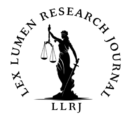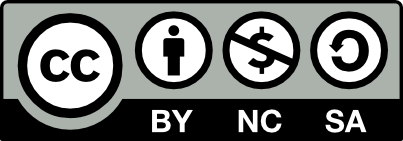Written by Amala chacko ,
Government Law College Kozhikode
December 2024
INTRODUCTION
In a world where artificial intelligence is generating poems, music, and even entire novels, a fundamental question looms: Who actually owns this creative output? Picture this: an artist uses a sophisticated AI tool to create a stunning digital painting. The artwork is mesmerizing, people love it, and it sells for a handsome sum. But then, the question arises—who is the true artist here? Is it the human who typed a few prompts, or is it the machine that “learned” from countless images and produced the artwork? This conundrum isn’t just a hypothetical; it’s a rapidly unfolding reality in today’s digital landscape, demanding a fresh look at how we define intellectual property (IP) and creativity.
With AI blurring the lines between human and machine creativity, it’s clear that our current IP laws are due for an overhaul. The challenge now, is to create a legal framework that protects human creativity while harnessing the transformative potential of AI.
THE AI CREATIVE EXPLOSION: A DOUBLE-EDGED SWORD
Artificial intelligence has revolutionized how we approach creativity. Tools like DALL-E[1] for images, ChatGpt[2] for writing, and Amper Music[3] for composing, have made it possible to generate content that can easily rival human-made creations. With a simple prompt, you can have a symphony, a novel, or a piece of artwork generated in minutes. It’s fascinating, yet it raises a big question—if a machine can create, who gets to own that creation?.
Consider this scenario: An advertising agency employs AI to craft a compelling slogan. Trained on an extensive corpus of existing slogans, the AI produces a striking line that secures client approval. However, when it comes time to secure copyright, the matter becomes complex. Traditional copyright laws, predating such technologies, presume human authorship, leaving the question of legal ownership ambiguous in the realm of AI-generated content.
REAL-WORLD IMPLICATIONS: THE STAKES FOR CREATIVE INDUSTRIES
The debate over IP ownership for AI-generated content isn’t just academic; it has real-world implications across multiple industries.
- In Media and Advertising: AI-generated content is already changing how companies approach branding and marketing. Instead of hiring an artist or a writer, firms can use AI tools to generate ad copy or visuals. This efficiency can drive down costs, but it also raises concerns about originality and authenticity. If a machine can create a logo or a slogan, what happens to the creative professionals traditionally responsible for these tasks?
- In the Music Industry: AI programs like OpenAI’ Musenet[4] can compose entire musical pieces, imitating the style of various composers. If a song generated by AI becomes a hit, who receives the royalties? The artist who trained the model, the developer of the AI, or no one at all? The answer isn’t clear-cut, and this ambiguity poses risks for musicians and producers.
- Software Development: AI tools that write code, like GitHub Copilot,[5] have sparked debate over the ownership of the resulting software. If an AI writes a piece of code based on patterns it has learned from publicly available repositories, can that code be copyrighted by the user, or does it belong to the creators of the original datasets?
COPYRIGHT LAWS VS. AI: A CLASH OF OLD AND NEW
Copyright laws around the world have always hinged on a simple premise: human authorship. The U.S. Copyright Act, for example, clearly states that only “original works of authorship” can be protected.[6] The term “authorship” implicitly suggests a human creator, as does India’s Copyright Act. In essence, the laws assume a scenario where a human brain—full of emotions, experiences, and unique insights—guides the creation of a work.
However, AI operates differently. It doesn’t have feelings or creative inspirations; it learns patterns from vast datasets and replicates them to create something new. This has led to several interesting, and sometimes bizarre, legal debates.
- The Monkey Selfie Case[7]: Although it doesn’t directly involve AI, this case is often cited in discussions about non-human creators. In this case, a monkey snapped a selfie with a photographer’s camera. The court ruled that since the photo was taken by a non-human, it could not be copyrighted. This sets a precedent: if animals can’t hold copyright, can a machine?
- Thaler v. U.S. Copyright Office[8]: In this landmark case, an AI called “Creativity Machine” produced an artwork, and its developer, Stephen Thaler, sought copyright registration. The request was denied because the U.S. Copyright Office ruled that copyright can only be granted to works with human authorship. This decision reinforces the current legal stance that machines cannot be recognized as creators.
In India, the challenge is similar. The country’s Copyright Act defines “author” as the person who creates the work, explicitly referring to a human being.[9] This legal framework hasn’t yet caught up with AI’s capabilities, creating uncertainty for businesses and individuals who use these technologies.
POSSIBLE OWNERSHIP MODELS: WHO GETS THE CREDIT?
As AI-generated content becomes more prevalent, the lack of clear legal guidelines has led to various potential ownership models being proposed. Each model offers a different approach to the question of who holds the rights to creations made by artificial intelligence, reflecting different priorities and legal interpretations.[10]
- User Ownership: The most straightforward model is to grant ownership to the person who uses the AI tool. For instance, if an artist uses DALL-E to generate a piece of digital art, they would hold the copyright. This model views the user as the person who initiates the creative process, even if their input is minimal.
- Pros: It aligns with current copyright practices where the person who creates a work, directly or indirectly, owns it.
- Cons: This model can be problematic when the user’s role is limited to providing a prompt without significant creative input.
- Developer Ownership: Another approach is to grant ownership to the developer of the AI system. This model considers the AI as a tool created by the developer, much like a paintbrush in the hands of an artist. Since the developer designed the algorithm that generates the work, they could be seen as the “true creator.”
- Legal Concerns: This could concentrate too much power in the hands of a few tech companies, stifling innovation and creativity among individual users and smaller firms.
- Joint Ownership: This model proposes shared ownership between the user and the developer. Here, both parties contribute to the creation process—the developer provides the tool, and the user supplies the creative direction.
- Challenges: Joint ownership could lead to complications in licensing and revenue-sharing, particularly in commercial use cases where multiple stakeholders are involved.
- Public Domain Approach: Another viewpoint is that AI-generated content should enter the public domain, as it lacks a clear human creator. This would make such content free for use by everyone, promoting widespread innovation.
- Downside: This could disincentives companies and individuals from investing in AI if they cannot hold exclusive rights to the content produced.
ETHICAL CONSIDERATIONS: BEYOND LEGAL OWNERSHIP
The legal questions surrounding AI-generated content are deeply intertwined with ethical considerations,[11]such as data usage and privacy. Many AI models are trained on datasets scraped from the internet without consent, leading to lawsuits from creators who argue their work is used without permission. If these datasets include copyrighted material, AI may inadvertently replicate it. Furthermore, as AI-generated content floods the market, transparency is vital. Consumers should know if the content they engage with was created by a machine or a human, and clear labeling can help manage expectations and protect human-created works.
NAVIGATING THE FUTURE: LEGAL REFORMS AND INDUSTRY ADAPTATIONS
As AI-generated content becomes more prevalent, lawmakers worldwide are grappling with how to adapt existing IP frameworks to accommodate these new realities.
- The EU’s AI Act: The European Union is leading the way with proposed regulations that could indirectly influence IP ownership.[12] The AI Act focuses on ensuring transparency and accountability in AI development, but it also lays the groundwork for future discussions about IP rights related to AI-generated works.
- India’s Legal Discussions: In India, there’s increasing talk about revising IP laws to better reflect the digital age. Proposals include recognizing “machine-assisted works,” which would grant rights to human contributors without excluding the role of AI.[13]
- Licensing Solutions: One practical approach might be standardized licensing models for AI-generated content, similar to Creative Commons licenses. This could provide clear guidelines on usage rights, helping creators and users navigate the complexities of ownership.
CONCLUSION: EMBRACING A NEW CREATIVE FRONTIER
The question of who owns AI-generated content is not merely a legal technicality; it’s a fundamental inquiry into the nature of creativity itself. As we continue to push the boundaries of what AI can achieve, our laws and ethical frameworks must evolve in tandem. The challenge lies in finding a balance that protects human creativity, encourages innovation, and fairly allocates the fruits of AI’s labor.
In navigating this new terrain, we are forced to rethink the very concept of authorship and creativity. It’s a brave new world, where the line between human and machine-generated art blurs, and the true test of our legal systems will be how well they adapt to these shifting sands of innovation. As we step into this era, the ultimate goal should be to create a framework that embraces both human ingenuity and the transformative potential of AI, ensuring that the future of creativity is inclusive, fair, and full of possibilities.
REFERENCES
- OpenAI, DALL·E: Creating Images from Text, OpenAI Blog (2023), https://openai.com/dall-e.
- OpenAI, ChatGPT: Optimizing Language Models for Dialogue, OpenAI Blog (2022), https://openai.com/research/chatgpt.
- Amper Music, AI for Music Creation, https://www.ampermusic.com.
- OpenAI, MuseNet: AI Music Generation, OpenAI Blog (2019), https://openai.com/research/musenet.
- GitHub Copilot, Introducing GitHub Copilot, GitHub Blog (2021), https://github.com/features/copilot.
- Copyright Act of 1976, 17 U.S.C. § 102(a) (2012).
- Naruto v. Slater, 888 F.3d 418 (9th Cir. 2018).
- Thaler v. Perlmutter, No. 1:22-cv-01564 (D.D.C. Aug. 18, 2023).
- Copyright Act, No. 14 of 1957, § 2(d), India.
- Annemarie Bridy, Coding Creativity: Copyright and the Artificially Intelligent Author, 2016 Stan. Tech. L. Rev. 5, 7–10 (2016).
- Andres Guadamuz, Artificial Intelligence and Copyright, 30 WIPO J. 34, 37–39 (2021).
- European Commission, Proposal for a Regulation Laying Down Harmonized Rules on Artificial Intelligence (Artificial Intelligence Act), COM (2021) 206 final.
- Narayan, Intellectual Property Law in India 456–58 (4th ed. 2021).
[1] OpenAI, DALL·E 2: Creating Images from Text, OpenAI Blog (2023), https://openai.com/dall-e.
[2] OpenAI, ChatGPT: Optimizing Language Models for Dialogue, OpenAI Blog (2022), https://openai.com/research/chatgpt.
[3] Amper Music, AI for Music Creation, https://www.ampermusic.com.
[4] OpenAI, MuseNet: AI Music Generation, OpenAI Blog (2019), https://openai.com/research/musenet.
[5] GitHub Copilot, Introducing GitHub Copilot, GitHub Blog (2021), https://github.com/features/copilot.
[6] Copyright Act of 1976, 17 U.S.C. § 102(a) (2012).
[7] Naruto v. Slater, 888 F.3d 418 (9th Cir. 2018).
[8] Thaler v. Perlmutter, No. 1:22-cv-01564 (D.D.C. Aug. 18, 2023).
[9] Copyright Act, No. 14 of 1957, § 2(d), India.
[10] Annemarie Bridy, Coding Creativity: Copyright and the Artificially Intelligent Author, 2016 Stan. Tech. L. Rev. 5, 7–10 (2016).
[11] Andres Guadamuz, Artificial Intelligence and Copyright, 30 WIPO J. 34, 37–39 (2021).
[12] European Commission, Proposal for a Regulation Laying Down Harmonized Rules on Artificial Intelligence (Artificial Intelligence Act), COM (2021) 206 final.
[13] P. Narayan, Intellectual Property Law in India, 456–58 (4th ed. 2021).



Well done Amala👍
Very Insightful👍
Relevant